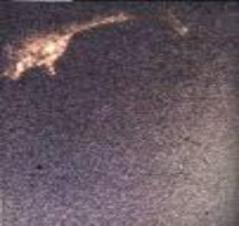As far as history can tell, the first recorded sighting of Scotland’s famous Loch Ness Monster or “Nessie” occured around 565 by Saint Columba, an Irish priest who was in the Highlands teaching Christianity.
One day while walking near the loch, he stumbled upon a group of locals burying one of their friends who had swam out into the loch to retrieve a boat that had come loose from its moorings and been attacked and killed by a monster from the loch. Columba asked one of his followers to swim out to get the boat and when he did the monster arose from the loch and began to attack the swimmer.
The story says that St Columba held up his cross and shouted at the creature which caused it disappear into the dark water once again and leave the man unharmed. More reports of strange things seen in the loch can be found from the 18th and 19th centuries as well.
Loch Ness is an extremely large and deep freshwater loch in theScottish Highlands that has been made quite famous over the years due tothe sightings of The Loch ness Monster. The famed Loch is extremely murky with very low visibility, which can make Nessie hunts more difficult. The Loch Ness is the largest Scottish loch by volume, with depths reaching 754 feet, and a surface area of almost 22 miles. This is more than enough area for The Loch Ness Monster to have quite a few good hiding places.
been made quite famous over the years due tothe sightings of The Loch ness Monster. The famed Loch is extremely murky with very low visibility, which can make Nessie hunts more difficult. The Loch Ness is the largest Scottish loch by volume, with depths reaching 754 feet, and a surface area of almost 22 miles. This is more than enough area for The Loch Ness Monster to have quite a few good hiding places.
As a matter of fact, it is said that the LochNess contains more fresh water than all lakes in England and Wales combined!
There are many theories surrounding the Loch Ness Monster. Some believe that The Loch Ness Monster could be related to an aquatic dinosaur, plesiosaurus. Many scientific studies have been done in search of Nessie, but there has been no conclusive evidence to date. There are however, thousands of reported sightings that date back centuries. There are also many photographs. Some of which have been proven hoaxes. Others are very convincing but apparently do not provide enough solid evidence to confirm the existence of The Loch Ness Monster.

